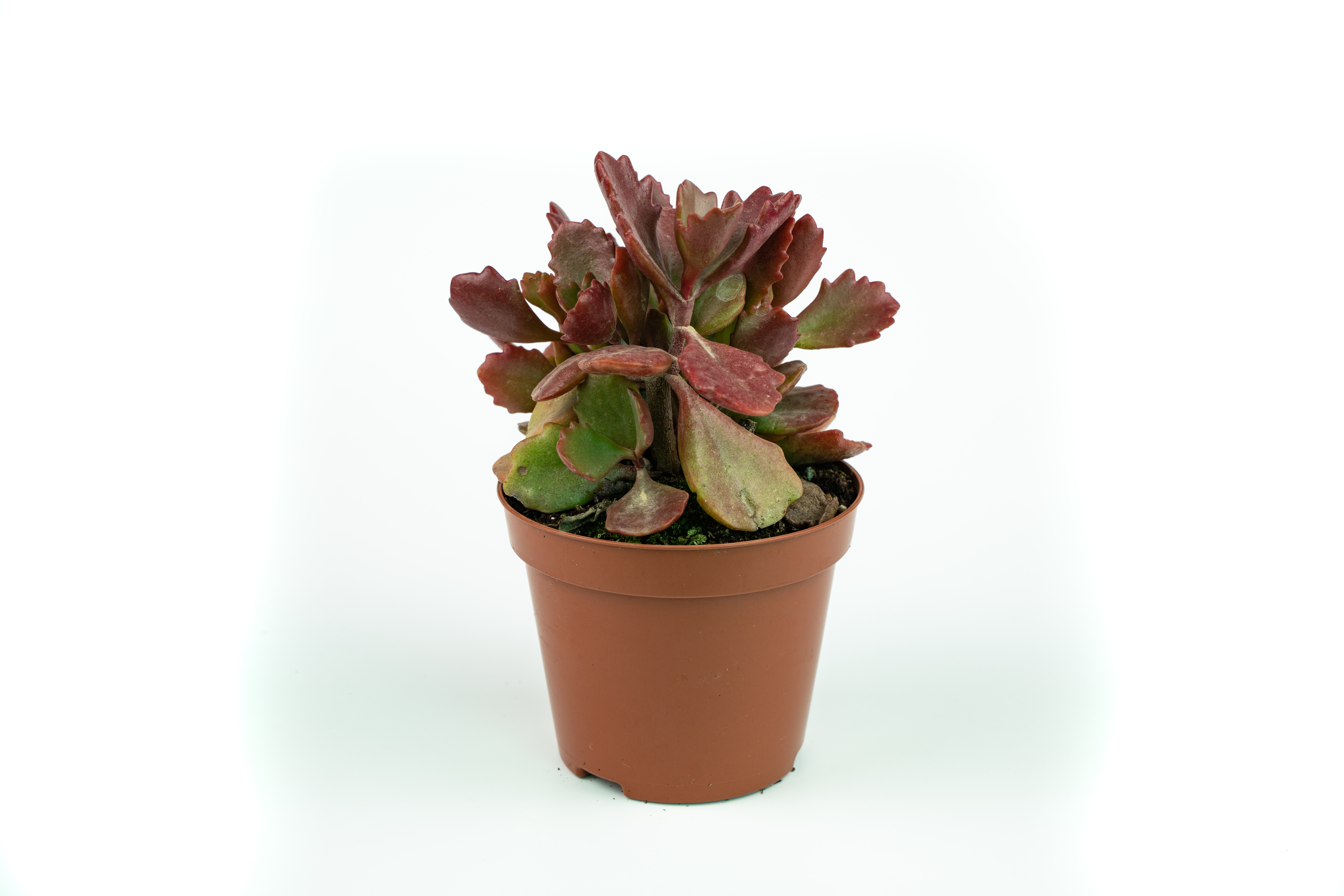Bushveld kalanchoe
(Kalanchoe sexangularis)

Description
Kalanchoe sexangularis, also known as bushveld kalanchoe, six-angled kalanchoe, or red-leaved kalanchoe, is a species of the succulent genus Kalanchoe, in the family Crassulaceae that is native to Southern Africa. Kalanchoe sexangularis is a succulent, perennial that reaches heights of 20 to 100 centimeters. Its single or few, simple, upright, round, reddish shoots are somewhat two-to-six-sided and arise from a woody base. The fleshy leaves are more or less stalked. The rutty petiole is 4 to 45 millimeters long. On the lower leaves it does not encompass the stem, but on the upper leaves it is clearly encompassing the stem. The broadly elliptical, elongated or egg-shaped, green to deep ruby-red (in full sun) leaf blade is 5 to 13 inches long and 3 to 8 inches wide. Their tip is rounded or blunt. The base of the lower leaves is heart-shaped, that of the upper is wedge-shaped. The leaf margin is roughly notched or wavy-notched or with one to four bluntly toothed lobes. A winter-bloomer, its inflorescence consists of flat-topped panicles up to 30 centimeters in length. The upright, green-yellow to bright yellow flowers are on 2 to 7 millimeter long peduncles. Kalanchoe is a genus of about 125 species of tropical, succulent plants in the stonecrop family Crassulaceae, mainly native to Madagascar and tropical Africa. A Kalanchoe species was one of the first plants to be sent into space, sent on a resupply to the Soviet Salyut 1 space station in 1979. Kalanchoes require direct sunlight although they can survive with bright indirect sunlight. They only need to be watered when the soil is completely dry. Most are shrubs or perennial herbaceous plants, but a few are annual or biennial. The largest, Kalanchoe beharensis from Madagascar, can reach 6 m (20 ft) tall, but most species are less than 1 m (3 ft) tall. Kalanchoes open their flowers by growing new cells on the inner surface of the petals to force them outwards, and on the outside of the petals to close them. Kalanchoe flowers are divided into 4 sections with 8 stamens. The petals are fused into a tube, in a similar way to some related genera such as Cotyledon. The genus Kalanchoe was first described by the French botanist Michel Adanson in 1763. The genus Bryophyllum was described by Salisbury in 1806 and the genus Kitchingia was created by Baker in 1881.
Taxonomic tree:







